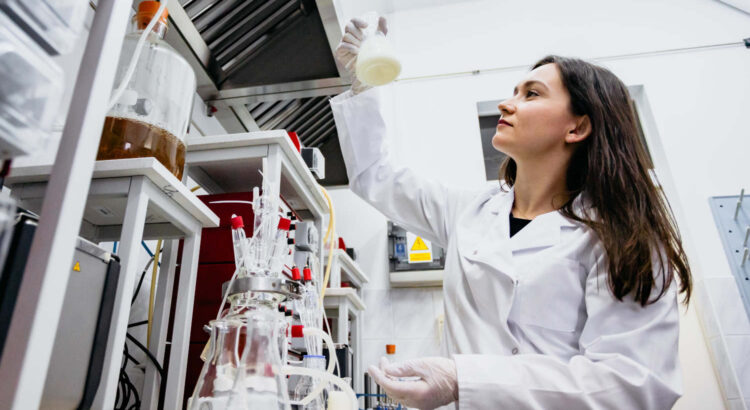Onion peels, carrot leaves, beet pulp – these are examples of vegetable processing side streams that can be successfully reused, not only in the food industry. However, as food or as a food additive, they can be a source of valuable substances that support our bodies, and this in turn has the potential to respond to the needs of consumers, who are increasingly paying attention to the health-promoting effects of the food they choose.
– Some side streams of vegetable processing can be used in the chemical, cosmetic or pharmaceutical industries. They can also become food or food additives – rich in health-promoting ingredients affecting, among other things, our intestinal microbiome, i.e. the bacteria living in our intestines, which, in turn, can have a positive impact on our immune system, explains Dr Joanna Fotschki of the Department of Immunology and Food Microbiology at the Institute of Animal Reproduction and Food Research of the Polish Academy of Sciences in Olsztyn.
There is a wealth of scientific evidence to suggest that side streams of vegetable processing can be a source of compounds with anti-inflammatory, antioxidant and cytoprotective properties (protecting the body’s healthy cells from damage), and that they have bioactive compounds that can modulate our gut bacteria.
– For example, tomato pomace extract may exhibit anti-inflammatory and cytoprotective effects, and beetroot pomace may exhibit antioxidant properties. Bioactive compounds, called polyphenols, from red onion husk may have antifungal and antimicrobial properties. Pumpkin seed oil, on the other hand, may prevent obesity caused by a high-fat diet by altering parameters important for lipid metabolism, according to the scientist, who is researching the suitability of plant processing side streams as a source of bioactive substances.
REDUCE WASTE
The vegetable industry generates large amounts of side streams that have the potential to be managed and utilised. – According to estimates, approximately 400,000 tonnes of waste is produced annually in fruit and vegetable processing in Poland. These can include, among others, onion plant husks, pomace, peelings from root vegetables, leafy threads and seeds – says Joanna Fotschki.
These products are most often used to produce compost or biogas. One trend in the use of 'waste’ from seasonal vegetables is also to extract natural food colourings from them for use in the production of beverages, confectionery and bakery products, dairy products and ready meals.
Sometimes, however, improper management of this plant biomass results in it being wasted. Indeed, as the scientist explains, the biggest problem of using post-production waste is the proper protection of this material from microbiological contamination, which consequently prevents its reuse. In addition, the costs of processing such by-products play a big role: drying, technological treatment, storage, transport.
– The side products of processing vegetables such as peppers, tomatoes, lettuce, aubergines and cucumbers, if not processed in a sufficiently short period of time, spoil very quickly, so managing them is a challenge for the food industry, often generating high disposal costs, says the researcher.
On the other hand, she adds, if the tested end product shows health-promoting properties for the consumer, then it will be more profitable for companies to use this 'waste’ than to dispose of it.
LACTIC ACID BACTERIA – GO FOR IT!
In her next research, Dr Joanna Fotschki wants to test whether the lactic fermentation process can be applied to the by-products of carrot processing.
Why such an idea? – Poland is one of the leading producers of carrots in Europe, and lactic fermentation is a well-known way of preserving food and giving it additional health-promoting qualities – the researcher answers.
– Even after technological processes (mainly thermal processes during pomace preservation), pomace is still a valuable raw material and contains biologically active compounds in its composition, which may suggest its potential use as a health-promoting food additive, she points out.
Carrot processing pomace contains many valuable compounds, e.g. fibre, proteins, lipids, essential oils, carbohydrates and phytochemicals (polyphenols and carotenoids). Many of these compounds have bioactive properties and are attributed to health-promoting functions, e.g. immune-enhancing, anti-inflammatory and antioxidant effects.
The use of lactic acid bacteria, on the other hand, can be a method of improving the safety, quality, sensory and nutritional value of fermented food, adds Dr Anna Ogrodowczyk, who works with Dr Joanna Fotschki at the Department of Immunology and Food Microbiology of the IAR&FR PAS in Olsztyn.
– The need for deeper research into plant side products – in order to find a common solution to the problem of waste management, the depletion of natural resources and the growing demand for food, including health-promoting food – seems necessary. At the moment, I am focusing on basic research on a laboratory scale, but in the next stages I would like to see this translated and applied in industry – concludes Joanna Fotschki.
